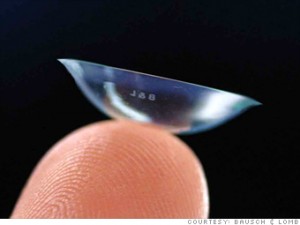Performance And Sport Sunglasses
The boom in outdoor sports activities like mountain biking, snowboarding, rock climbing, kayaking, skiing, golfing and in-line skating has also created a demand for sports- and performance-oriented sunglasses.
These special-purpose sunglasses are designed to be exceptionally light and comfortable, able to withstand extreme conditions and stay comfortably in place during any activity.
Lenses
Perhaps the most important aspect of effective sports sunwear is the optical quality and visual enhancement properties of the lenses. In particular, sports and performance lenses are available in a wide variety of tints to modify light in certain ways to enhance contrast. This allows you to see certain objects […]

 Myopia (nearsightedness) is a common vision problem affecting children who can see well up close, while distant objects are blurred. Nearsighted children tend to squint to see distant objects such as the board at school. They also tend to sit closer to the television to see it more clearly.
Myopia (nearsightedness) is a common vision problem affecting children who can see well up close, while distant objects are blurred. Nearsighted children tend to squint to see distant objects such as the board at school. They also tend to sit closer to the television to see it more clearly. There’s no question that good vision is important for learning. Experts say more than 80% of what your child is taught in school is presented to them visually.
There’s no question that good vision is important for learning. Experts say more than 80% of what your child is taught in school is presented to them visually.